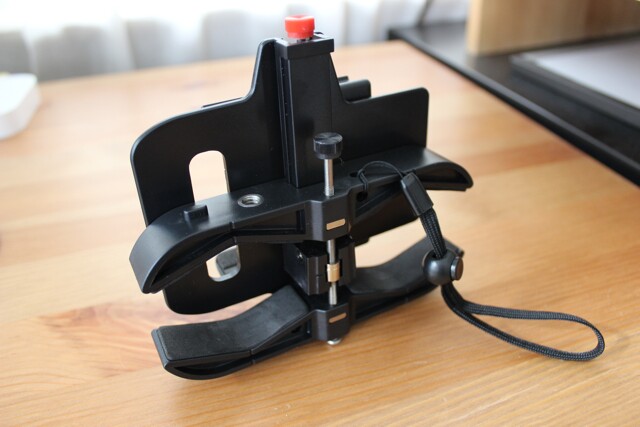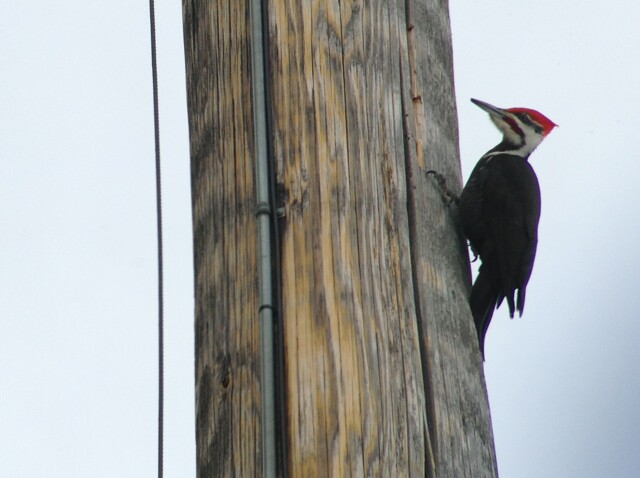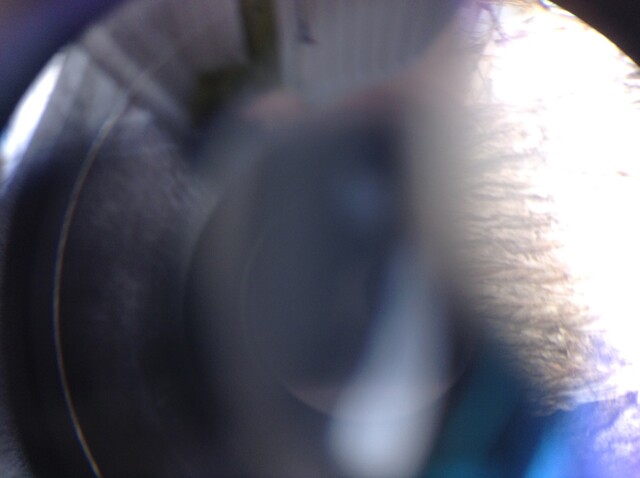Chances are that you already carry a smartphone with you wherever you go, and if you're a wildlife-watcher, hiker, or sporting-event spectator, then you likely also have a pair of binoculars. Well, the Snapzoom is a new product that brings those two devices together – it lets you get telephoto snapshots of distant subjects, by holding your phone's camera lens in alignment with one lens of your binoculars. I recently got a chance to try the thing out for myself, and liked what it had to offer.
The Snapzoom features a platform on one side that holds your phone in an adjustable foam-lined clamp, and a clamp on the other side that holds the binoculars by both of their eyepieces – a variety of makes and models of phones and binoculars can be accommodated, as can devices such as spotting scopes and telescopes.
The phone's camera lens peeks through a slot in the mounting platform, and is lined up with one binocular eyepiece. When setting the Snapzoom up for the first time, the position of the binocular clamp has to be fine-tuned to ensure a good match-up, then locked into place. After that, both the phone and binoculars can be removed and then reinstalled, with only a bit of sliding of the phone required to bring them back into alignment with one another.

You do have to zoom in slightly on the phone, in order to crop the edges of the eyepiece out of the shot. This is a bit disappointing, as using the phone's digital zoom even a little does make the image somewhat grainier – after all, you're really just cropping out the pixels around the edge of the shot, and enlarging those in the center.
The telephoto effect of the binoculars also results in a very jittery, jiggly shot. If you're going hand-held, it might take you a couple of tries before getting a photo in which the subject is centered nicely.
If I were using the device to shoot video, I would definitely use a tripod, lock it off, and not touch the phone or binoculars while recording. Complicating matters, however, the instructions stipulate that tripods should be attached to the binoculars as opposed to the Snapzoom – this is because it's not a good idea to hold binoculars in such a way that all of their weight is being supported by their eyepieces. Co-inventor Daniel Fujikake tells us that it's also a good idea to use a wireless smartphone camera-triggering device, to keep the phone from shaking when the Shutter Release icon is pressed.
Smallish quibbles aside, though, I enjoyed using the Snapzoom. I took it out last weekend, and got some half-decent photos. These included shots of ...



OK, I have to admit, that last shot was staged for "comedic purposes." My neighbor Joanne actually volunteered for it, and as an avid birdwatcher, was quite taken with the Snapzoom.
Speaking of which, in the shot of the woodpecker you can see a bit of chromatic aberration – that's where the blackness of its back kind of smears into purple along the edge. That effect was also present in some of my other shots, and appears to be due to the use of the binoculars. If you want only National Geographic-quality images, though, you're presumably not going to be taking them with your phone in the first place.
At this point, some readers may be wondering "Why not just hold the phone up to the binoculars yourself, without using the Snapzoom?". Well, I tried, and found it very difficult to keep the two in alignment for more than a fraction of a second at a time. Additionally, I got a lot of reflections on the glass of the eyepiece. Below is one of my attempts at photographing a tree.

You could instead just get an add-on telephoto lens for your phone, get a smartphone adapter for an existing telephoto lens (if you have one) or go with a set of image-capturing digital binoculars. That said, though, the first option likely won't offer the same level of magnification as a good set of binocs, while the latter two are much more expensive. Additionally, the Snapzoom won't need to be replaced every time you upgrade phones or binoculars.
On the subject of price, the Snapzoom retails for US$74.95 – a little more than I'd prefer to pay, although hopefully that figure will come down as production increases. The similar Magnifi is five bucks more, while the much simpler binocular adapter from Carson Optical goes for just $18, although it only works with the iPhone, and requires a secondary adapter for use with models below the iPhone 5.
Source: Snapzoom













